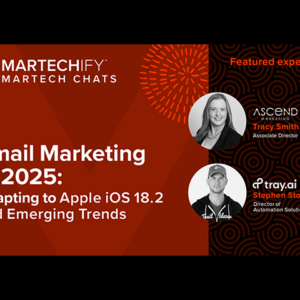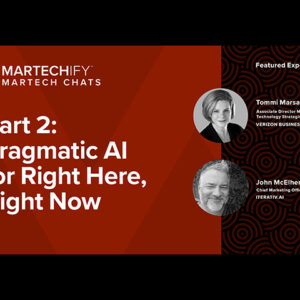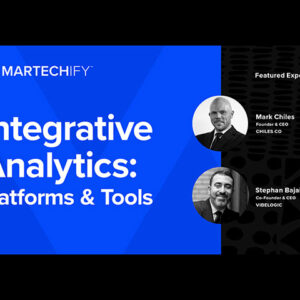Top 10 Predictions from 10 Leading Experts: What to Expect in Martech and Data in 2025
Do you have your finger on the pulse of martech trends for 2025? From hyper-personalization to vertical AI agents, martech is driving marketing to new places. See what our 10 experts predict you should look out for next year:

Prediction for 2025: Hyper-personalization becomes non-negotiable in martech
Abhi Vyas, Marketing, Digital Personalization and Media Executive at Verizon
In 2025, hyper-personalization will be essential for marketers, driven by growing consumer expectations for tailored experiences across all touchpoints. Black Friday alone generated $10.8 billion in online sales in 2024, more than double the $5 billion recorded in 2017, underscoring the increasing reliance on digital channels.
Despite this growth, most people did not receive a truly personalized message or notification during the holiday shopping period. This gap presents a significant opportunity for brands to leverage hyper-personalization to differentiate themselves.
Despite this growth, most people did not receive a truly personalized message or notification during the holiday shopping period. This gap presents a significant opportunity for brands to leverage hyper-personalization to differentiate themselves.
To meet these expectations, brands must utilize AI-driven tools to optimize customer experiences in real time. Successful companies are already combining AI with “organizational intelligence” by bringing together cross-functional teams to analyze data from every customer touchpoint and deliver actionable insights. For example, hyper-personalization involves creating targeted email campaigns, such as abandoned cart emails that direct users back to their exact cart, rather than a generic landing page.
This granular level of personalization, powered by AI, extends to ads, push notifications, and in-app messages, ensuring relevance and timeliness for each customer. Personalization is about speed—speed in knowing your customers and speed in improving their experience.
However, hyper-personalization must be executed with care to avoid negative reactions, such as customers opting out or marking messages as spam. For instance, according to eMarketer, 72% of surveyed customers expressed a desire for brands to understand their needs, and over 80% were willing to share their personal data for a truly personalized experience. Ethical data practices, such as obtaining consent and focusing on first-party data, will be crucial as third-party cookies are phased out.
Leading brands like Nike and Coca-Cola have already embraced personalization by allowing customers to design their own shoes or offering products tailored to individual preferences, such as personalized protein powders or smart gummies. In 2025, brands that effectively harness these strategies will build loyal customer bases and gain a significant competitive edge.
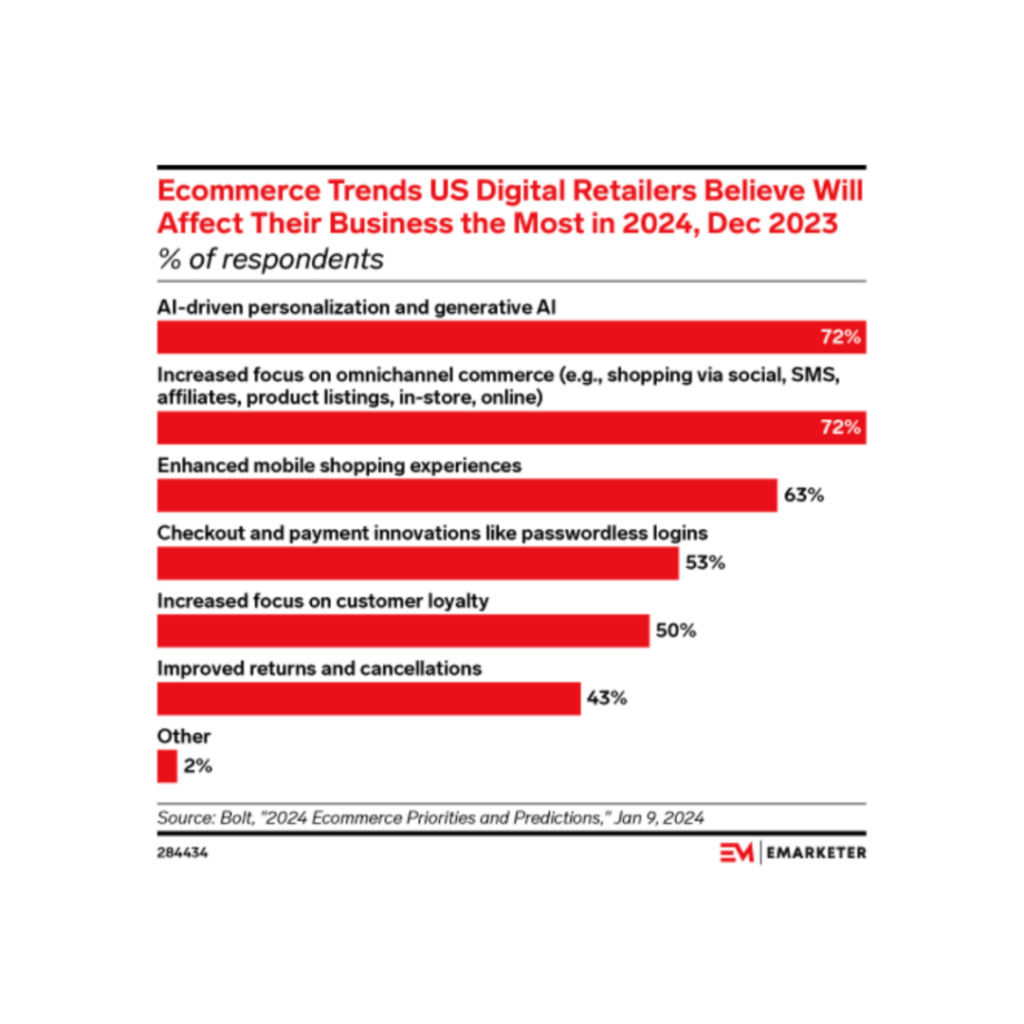
Graphic from EMarketer, included in Abhi’s AMA Pittsburgh December Lunch & Learn presentation, December 4, 2024

Prediction for 2025: Refreshing your 2025 email marketing program for iOS 18.2
Tracy Smith, Email Marketing Expert at Ascend Marketing
Apple launched iOS 18.2 on December 11, 2024, for iPhone 15 Pro/Max and iPhone 16 owners.
The revamp to email inboxes closely matched the UX seen during beta. This is good news for marketers who prepared for the release, but it’s a problem for companies who missed the industry buzz, like my power company. Their email came through with roughly 90 percent unloadable content below the subject line.

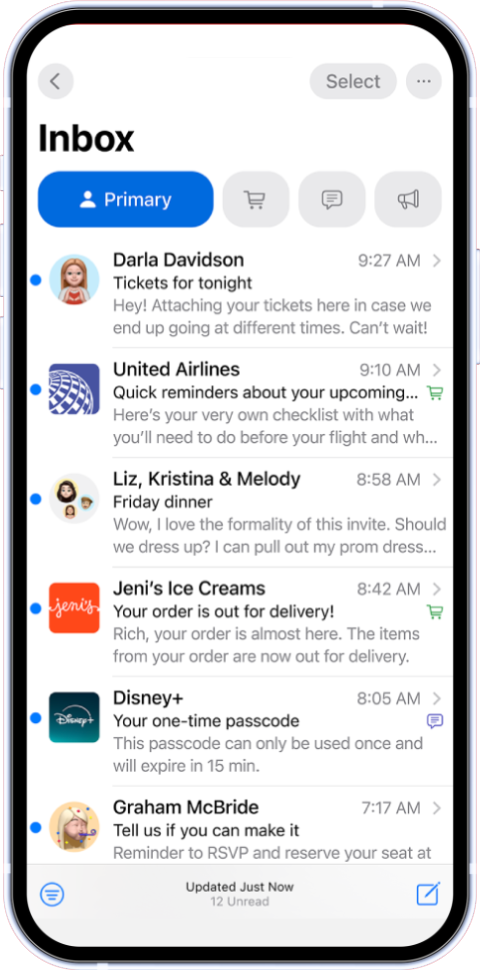
Marketers can minimize the impacts to their programs by understanding how iOS 18.2 functions. You may be aware that AI now presorts new emails into categories: Primary, Transactions, Updates, and Promotions. How each email is labeled seems consistent on my iPhone 16 Pro. For example, Updates include shipment notices, Promotions house general marketing emails, Transactions include my Zelle notices, and Primary has 1:1 emails sent directly to me.
A detail of note is that preheaders are gone, replaced by an AI-generated summary of the email. My experience with Apple AI summaries is mixed. Short, clear copy is presented accurately. Promotional content, however, seems to confuse the AI—especially when a myriad of images and prices are shown. For example, DirectTV sent me a holiday offer for $691. The AI read that “1” superscript mark and showed $691 in the summary. This is a glitch I will proactively manage in my marketing emails.
Marketers using best practices and running a clean program can make a few modifications that I believe will enhance their odds of better renderings and AI summaries:
— Set up Branded Mail in Apple Business Connect to ensure your logo and company name are verified.
— When verified, a company logo is displayed in the inbox and at the top of the email, as shown in this example for United Airlines. Apple’s states verification “helps business owners build their brand identity, increase trust…with customers, and make their emails stand out in the Mail app.”
— Know that a brand can’t have more than 100 domains, subdomains, and email addresses.
— Keep subject lines short—consider industry recommendation of less than 50 characters.
— Reduce marquee image size to no more than 200 pixels wide and 200 pixels tall.
— Avoid using superscript numbers as disclaimer marks when attached to pricing copy.
— Keep using preheaders for non-Apple mail users.
— Test your emails on all major mobile platforms, in dark mode, and on desktop.
— When verified, a company logo is displayed in the inbox and at the top of the email, as shown in this example for United Airlines. Apple’s states verification “helps business owners build their brand identity, increase trust…with customers, and make their emails stand out in the Mail app.”
— Know that a brand can’t have more than 100 domains, subdomains, and email addresses.
— Keep subject lines short—consider industry recommendation of less than 50 characters.
— Reduce marquee image size to no more than 200 pixels wide and 200 pixels tall.
— Avoid using superscript numbers as disclaimer marks when attached to pricing copy.
— Keep using preheaders for non-Apple mail users.
— Test your emails on all major mobile platforms, in dark mode, and on desktop.

And as always:
— Ensure your logo has a BIMI (Brand Indicators for Message Identification) certification.
— Enable DMARC (Domain-based Message Authentication, Reporting & Conformance) for your domain(s).
As a final thought, let’s not forget that Google made a similar change last fall. Social media posts are showing how to undo the categories tabs on both Gmail and iOS 18.2. However, I think long-term consumers will accept the categorized inbox, because it provides an additional method to identify deceptive emails and filter spam. My 73-year-old in-law was giddy when she learned “those scam emails” go into their own bucket.
— Ensure your logo has a BIMI (Brand Indicators for Message Identification) certification.
— Enable DMARC (Domain-based Message Authentication, Reporting & Conformance) for your domain(s).
As a final thought, let’s not forget that Google made a similar change last fall. Social media posts are showing how to undo the categories tabs on both Gmail and iOS 18.2. However, I think long-term consumers will accept the categorized inbox, because it provides an additional method to identify deceptive emails and filter spam. My 73-year-old in-law was giddy when she learned “those scam emails” go into their own bucket.

Prediction for 2025: The growing role of robotics and the immersive marketing technologies behind it
Gretchen Weaver, Interim Director of Marketing at Innovation Works
In 2025, robotics is projected to remain one of the fastest-growing industries. Companies operating in the B2B robotics space will have greater opportunities to simplify the complexity of their products, driving demand and accelerating their often-intricate sales cycles.
While broader trends like privacy-first marketing and AI-driven personalization remain important, robotics firms will increasingly adopt immersive technologies such as AR, VR, and mixed reality to bridge the gap between innovation and customer understanding.
These tools allow companies to showcase advanced solutions through interactive demonstrations, virtual walkthroughs, and digital simulations. By helping buyers visualize real-world applications of these systems, marketers can boost buyer confidence and make purchasing decisions more straightforward.
To address a similar challenge, robotics companies will increasingly leverage digital twins paired with AI models and advanced analytics as part of their marketing strategies. These technologies enable prospects to experiment virtually with robotic solutions, customizing configurations and evaluating performance in a risk-free environment. By facilitating hands-on engagement, robotics firms can differentiate themselves, shorten sales cycles, and minimize proof-of-concept timelines.
Educational content will also play a crucial role as companies strive to overcome adoption barriers. Expect to see more industry-specific video case studies, explainer content, and interactive experiences designed to resonate with non-technical decision-makers. These initiatives not only drive demand but also position robotics companies as thought leaders in their respective industries.

Prediction for 2025: Accessible and customizable automation will drive business growth
Sri Ganesh Anaparthi, IT, AI/ML Strategy, Cybersecurity, and Digital Transformation Lead at Ascend Marketing
In 2025, the demand for accessible, powerful, and customizable automation platforms will surge as businesses increasingly seek solutions to simplify complex workflows without requiring extensive technical expertise.
Companies will prioritize platforms that address common challenges, such as seamless integration with major cloud providers like AWS, easy deployment for non-developers, and enhanced customization options, such as pre-configured workflows and custom domain support.
As automation becomes a cornerstone of operational efficiency, small and medium-sized businesses will rely on advanced, user-friendly solutions to scale operations, reduce costs, and stay competitive in an evolving digital landscape. My data science and technology team is actively working on a solution that will deliver enterprise-grade capabilities to smaller business players. We’re excited to reveal this solution in 2025—stay tuned!

Prediction for 2025: The year of practical AI adoption and human-AI collaboration
Sandeep Asokan, Data Scientist at Altimetrik
Although we are still in an AI hype cycle, the year 2025 will be a realization year.
It will be a year of enhanced AI agents, in which more businesses and startups will be adopting and developing them and end users embracing them at scale.
Hence, we will have more non-human, non-biological intelligence working along with humans for doing particular tasks.
In martech, trends related to analysis of orders, enhancing customer relationships, and step-by-step analysis of a particular decision-making process could be hotspots. Also, let’s not be surprised if we were to witness the start of an agentic swarm, with AI tools integrating and communicating with each other to solve complex tasks. These empower and augment human agents in the work they have been doing.

Prediction for 2025: AI continues to transform market research
Rebecca Farabaugh, Marketing Consultant and Data-Fluent Storyteller
Generative AI is transforming how market researchers gather insights and make informed decisions. It is already being used to facilitate survey development, aid in data analysis and visualization, and test and enhance research projects before they are rolled out.
In the future, we’ll see continued transformation. For example, researchers from Carnegie Mellon University and other institutions are investigating if and how artificial intelligence could even replace human participants in some studies. It’s an idea that needs more consideration before becoming widely available, and researchers are carefully balancing the potential benefits against significant concerns, but it certainly signals continued transformation in the field of market research.

Prediction for 2025: The rise of vertical AI agents and trust-building
Drake Som, Co-Founder, Chief Product Officer at Sitewiz
Two core marketing and technology trends for 2025 are the rise of vertical AI agents and an increased focus on trust-building, both defining characteristics of the year.
Vertical AI agents, of course, are very good at specific tasks and automation compared to larger LLMs, which are better at conversation and text generation. These vertical AI agents, especially within conversion rate optimization, will be much better at generating tests and analyzing them.
But it’ll be up to the humans to interpret them and evaluate them. These agents aren’t going to fully replace humans yet, because these organizations will rely on human-led AI experimentation to bridge a bit of cultural skepticism. And these humans that are familiar with AI strengths and weaknesses and are responsible for pushing it to the limits within organizations are going to be critical.

Prediction for 2025: Martech shaping creative work with generative AI, instant delivery, and individual creators
Chad Isaiah, Headshot & Event Photographer at Chad Isaiah Studios and Peter Hurley’s Headshot Crew
We will continue to see a rise in AI-generated images across marketing materials. OpenAI’s DALL-E has already replaced advertising agencies at some large companies and it will start to replace some commercial photographers.
Companies looking to spin up a quick, short campaign will likely use AI images, but larger pillar campaigns will continue using professional branding photographers.
I’ve been receiving more requests for instant delivery projects, where the marketing team has access to a live photostream during an event. In addition to individual participants promoting an event in action, companies will actively promote events on social media while the event is taking place, thereby allowing them to control the narrative.
On social media, we will continue to see the rise of individual creators. Large companies would benefit most from featuring individual employees showcasing how their products are brought to life or testimonials from clients about how their product solves a problem. The trend is moving away from polished videos to authentic-feeling videos from cell phones.

Prediction for 2025: AI-powered conversion rate optimization (CRO)
Brian Massey, Conversion Optimization Expert at Conversion Sciences
The thing I’m excited about in 2025 is the effort to put me and the people who work for me out of a job. The efforts to use AI large language models to provide a full analysis of a website and help you understand what things you should be testing next are still nascent, with some focus on applying heuristics or best practices.
CROBenchmark.com is gathering dozens of CRO experts to compile a full list of what these best practices are, but more exciting is the connection we’re finding between these ideas and the backend data.
Systems coming online will use analytics and heat map reports to not only give you ideas for changes but also help prioritize them using data. With the combination of ideas and data, we’ll be able to know not only what we should change but also which changes are most likely to deliver an ROI through an A/B test.

Prediction for 2025: AI-driven search could reduce traffic by up to 80% in 2025
Gerardo A. Dada, Chief Marketing Officer and Field CTO at Catchpoint
In 2025, martech will continue to evolve with a sharp focus on AI’s transformative influence and the need for marketers to return to foundational principles.
I predict that Google’s AI-driven search overviews will significantly alter traffic dynamics, as users increasingly rely on direct AI tools like ChatGPT or are served rich AI summaries that bypass traditional search links. This change could reduce traffic by as much as 18% to 80% for specific keywords, making SEO strategies more challenging.
While the allure of generative AI, big data, and other shiny objects remains strong, successful marketers will prioritize clarity in their Ideal Customer Profiles (ICPs), buyer personas, and differentiation over chasing trends. This back-to-basics approach will be critical for navigating a landscape where marketers are held increasingly accountable for growth amid tighter budgets and greater demands for efficiency.
At the heart of this shift is the need to rethink content marketing. Content strategies driven by volume and frequency are becoming outdated, resulting in poor content that fails to resonate with audiences. Instead, marketers should stop the content machine philosophy. …We, as marketers, should focus on creating fewer, high-quality assets that align with the intersection of what the market cares about, the company’s unique expertise, and topics that predispose customers to buy. Ungated, highly valuable content establishes credibility, builds trust, and naturally attracts high-intent buyers.
In 2025, successful martech strategies will hinge on thoughtful, customer-centric content and streamlined marketing stacks, ensuring every effort is tied directly to business outcomes.


